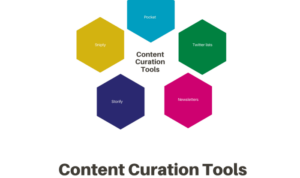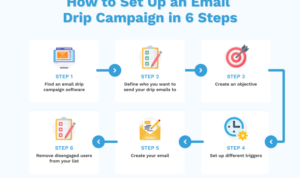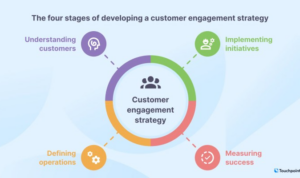Building a Social Media Engagement Plan sets the foundation for a thriving online presence, guiding businesses towards increased visibility and customer loyalty through strategic engagement strategies. Dive into the world of social media engagement and unlock the secrets to success.
Importance of Social Media Engagement
Social media engagement is crucial for businesses in today’s digital age as it allows them to connect and interact with their target audience on a more personal level. By engaging with followers through likes, comments, shares, and messages, businesses can build relationships, increase brand awareness, and drive customer loyalty.
Examples of Successful Social Media Engagement Strategies
- Hosting interactive Q&A sessions with industry experts to provide valuable insights to followers.
- Running contests or giveaways to incentivize engagement and increase reach.
- Responding promptly to customer queries and feedback to show that you value their input.
Impact of High Engagement on Brand Visibility and Customer Loyalty
High engagement on social media can significantly boost brand visibility as it increases the likelihood of content being shared and reaching a wider audience. Additionally, fostering a strong community of engaged followers can lead to increased customer loyalty and advocacy, as satisfied customers are more likely to promote your brand to others.
Elements of a Social Media Engagement Plan
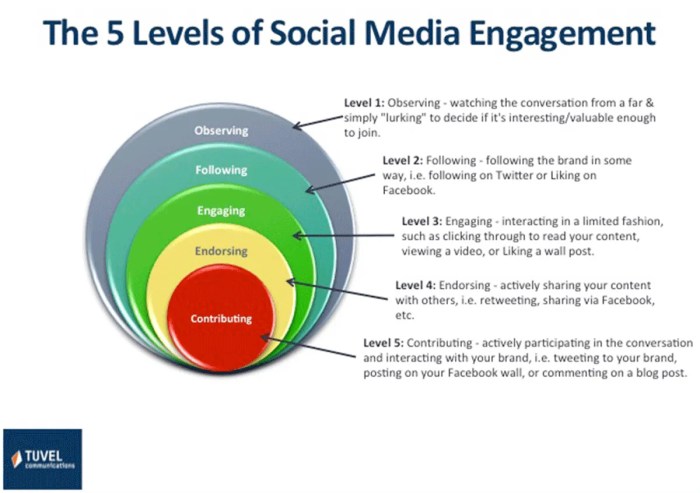
To create an effective social media engagement plan, there are several key elements that need to be considered. These elements include content creation, community management, analytics, and setting clear goals and objectives.
Content Creation
Content creation is a crucial element of a social media engagement plan. It involves creating relevant, valuable, and engaging content that resonates with your target audience. This content can include posts, videos, images, and other forms of media that are designed to capture the attention of your followers and encourage interaction.
Community Management
Community management plays a vital role in engaging with your audience on social media. It involves actively monitoring and responding to comments, messages, and mentions from your followers. By engaging with your audience in a timely and authentic manner, you can build stronger relationships and foster a sense of community around your brand.
Analytics
Analytics are essential for measuring the effectiveness of your social media engagement plan. By tracking key metrics such as reach, engagement, and conversion rates, you can gain valuable insights into what is working well and what areas need improvement. This data can help you make informed decisions and optimize your strategy for better results.
Setting Clear Goals and Objectives
Setting clear goals and objectives is fundamental to the success of a social media engagement plan. By defining specific, measurable, achievable, relevant, and time-bound (SMART) goals, you can provide direction and focus for your efforts. These goals should align with your overall business objectives and help you track progress towards achieving them.
Target Audience Analysis
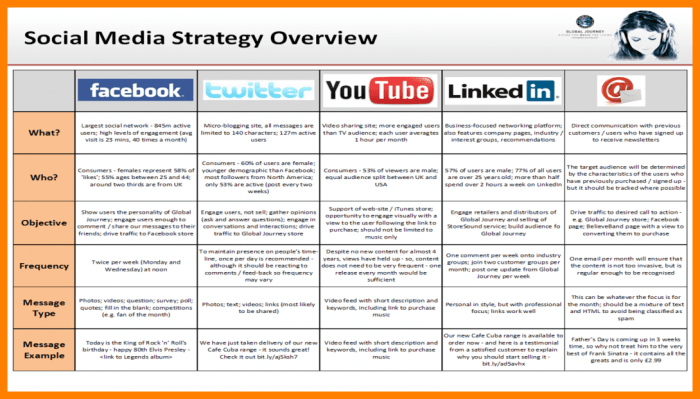
Understanding the target audience is crucial for creating an effective social media engagement plan. By knowing who your audience is, you can tailor your content to meet their needs and preferences, ultimately leading to higher engagement and better results.
Importance of Understanding the Target Audience, Building a Social Media Engagement Plan
- Helps in creating relevant and personalized content
- Allows for targeted communication and messaging
- Increases the chances of resonating with the audience
Methods for Conducting Audience Research and Segmentation
- Utilize social media analytics tools to gather demographic and psychographic data
- Conduct surveys or polls to gather direct feedback from the audience
- Utilize customer relationship management (CRM) tools to track customer interactions
Tailoring Content to Resonate with Different Audience Segments
- Create different content for each audience segment based on their interests and preferences
- Use language and tone that resonates with each specific segment
- Include visuals and media that appeal to each segment
Choosing the Right Social Media Platforms: Building A Social Media Engagement Plan
When it comes to choosing the right social media platforms for your engagement plan, you need to consider the preferences of your target audience and align them with your business goals. Let’s dive into comparing and contrasting popular social media platforms and providing tips on selecting the most suitable ones.
Comparison of Popular Social Media Platforms
- Facebook: With a large user base, Facebook is great for reaching a wide audience. It offers various engagement features like groups, events, and live streaming.
- Instagram: Ideal for visual content, Instagram is popular among younger demographics. Its Stories and Reels feature can boost engagement.
- Twitter: Known for real-time updates and conversations, Twitter is perfect for quick engagement and sharing news or updates.
- LinkedIn: Best for B2B engagement, LinkedIn allows you to connect with professionals and share industry-related content.
Tips for Selecting Social Media Platforms
- Understand your target audience: Analyze their demographics, interests, and online behavior to choose platforms they frequent.
- Align with business goals: Select platforms that help you achieve your objectives, whether it’s brand awareness, lead generation, or customer service.
- Experiment and analyze: Test different platforms to see where you get the most engagement and adjust your strategy accordingly.
Advantages and Disadvantages of Multiple Platforms vs. Single Platform
- Multiple Platforms:
- Advantages: Reach a larger audience, diversify your engagement strategies, and increase brand visibility.
- Disadvantages: Requires more time and resources to manage, may dilute your brand message if not consistent across platforms.
- Single Platform:
- Advantages: Focuses efforts and resources, maintains a consistent brand message, easier to manage and analyze results.
- Disadvantages: Limits reach to a specific audience, potential missed opportunities on other platforms.


